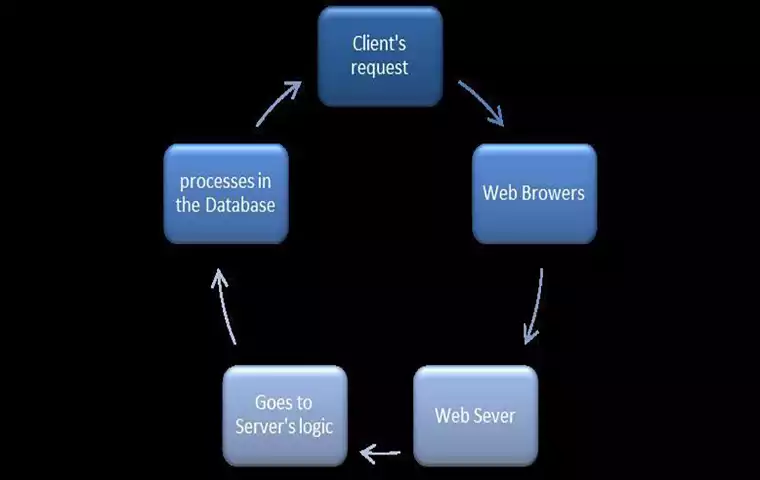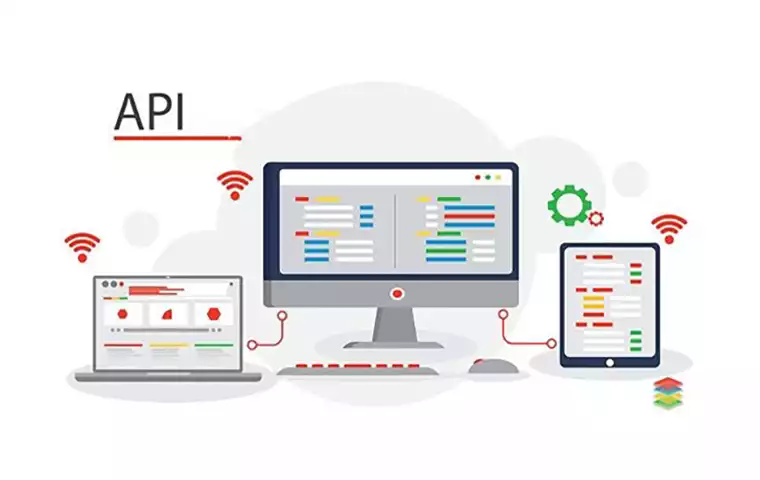

It usually requires two steps to develop a web app, the back end development and the front end development. The back end is very important in the development world since it deals with the logical brain of a website or app.
Therefore, better performance in the back end design will guarantee a more desirable user experience (UX) in the front end. So, the backend web development is the part that keeps a web app or website working.
Anything that happens in the backend will be projected on the web app’s front end; accordingly, it is obvious that dealing with the back end is a critical and intricate job.
In the following article, we are trying to analyze various aspects of the back end and provide useful information about its function and significance. So, please stay with us.

The back end consists of whatever happens behind the internet. It handles the functionality of the web applications, websites, or mobile apps on the server-side; consequently, it is also known as server-side programming.
Therefore, the back end’s responsibilities are mainly the servers, databases, and APIs (Application Programming Interface).
In order to have a more comprehensive view of the back end development, let us make an analogy to simplify this. Imagine yourself at a restaurant, the place you are sitting in, the menu, and everything you can observe can be regarded as the front end, and back end is where everything is becoming ready.
As in a restaurant where a customer can’t see the kitchen and the food preparation process, in a web app, a client can’t see the back end procedure.
The client orders, and the server carries out the commands; ultimately, the database analyzes the request. When the database makes the requested output, the server transfers it to the front end and UXUI.

Overall, the server-side software, database, back end programming language, and API are the essential elements of a back end.
This is the initial step for the web application development; so let’s look at each of the back end development ingredients.
All the information that the server needs is piled up in the database. By storing data in databases, you will reduce the load on the main server’s CPU and boosts your web application’s efficiency.
We have two types of databased known as SQL (Structured Query Language) and NoSQL.
A SQL database follows a relational database management system (RDMS), and data are classified into tables. Columns stands for the types of data and the rows have quantities in them.

SQL databases are a better option for more complex data queries when you need a higher level of consistency and data validity is important.
Some popular SQL databases are MySQL, MariaDB, and Postgres. MySQL is widely used as a relational database that some people might consider databases types as MySQL and NoSQL.
In NoSQL databases, data are classified in JSON (JavaScript Object Notation) patterns which are dynamic schema and will suggest more flexibility.
NoSQL databases are easier to operate and when data availability is important, NoSQL’s satisfying speed will be a lifesaver.
NoSQL databases are developed to overcome the limitations of SQL databases. In NoSQL, you don’t have the limits like having only one quantity in every cell.
Some of the most common NoSQL databases are MongoDB, Firebase, and AWS DynamoDB.
Databases are very useful in the back end design when you want to store some of your clients’ data. For example, the database can keep the usernames and passwords of your customers in order to authenticate them in each login.
Through all the intricate work that is going on in the back end, the client eventually needs to receive the data successfully. The API’s responsibility is to interpret the server and database’s commands.
Let’s get back to our restaurant example once more. Obviously, you can’t go to the kitchen to order your meal.
Taking your message to the kitchen is the waiter’s responsibility or in the back end development, it is the role of API to interpret and transfer massages between two machines.
When you are in a web app or website, and you are choosing among various services, the API accesses the web app’s database to provide you with the requested service.
In a similar manner, the waiter checks with the chef that if the requested dish is available or not.

Using API is very secure since you do not expose the whole information on your mobile or PC’s data with the server. Moreover, modern APIs are neatly organized and provide easy and fast access to the requested data.
APIs are very helpful for companies with large-scale databases because APIs can customize the data that are being used more. Therefore, it is easier for big companies to modify and share their content and services.
Apart from the process that is going on in the beck end, there is a crucial matter prior to all we discussed. The basic ingredients that are necessary for cooking in the kitchen are codes, and they are written with different programming languages.
To choose a back end programming language that suits your project, you have to analyse all of the aspects of your back end development projects.
All of the languages for a web development must be compatible with your needs; it should be update, and has some bright future in the market.
You definitely have been heard about some of the popular back end development languages like, C#, C++, PHP, JavaScript, Ruby, Python, and Java and so on.
Among these examples, C++, C# and Java are easier to master if you are planning on building everything from scratch.
In the following articles, we are planning to investigate back end coding languages in detail. Just keep in mind that you cannot figure the back end language or framework of a website or web app unless you have an access to the information.
But why should we use back end framework in mobile app and web development? What are they?
A framework is a server-side library for deploying your codes and numbers. It is compatible with your back end languages and is determined to make the programming more convenient.

Employing a framework in back end development will automate the out-put; so, it is helpful and time-saving for back end developers. On the other hand, the frameworks and their modules help developers to come up with unique configurations.
Framework libraries are also helpful for debugging since they document the data, and it is easier for developers to track and modify data. Moreover, it is more secure to use a framework, and it can be scaled up as your data expands.
All parts of the back-end process that are mentioned so far are very significant in the development process.
One little mistake in the back end and you may jeopardise all your efforts so far. So, be cautious with all the tough and naughty details of the back end.
You have to be careful that considering all these hints can also be useful for front end development and full stack web application as well.
You can read about the specific details of frontend and full stack development in our future articles.
The backend consists of the server, the application, and the data store. The machine that processes queries is called a server. The application is server-side software that listens for requests, then looks up the requested data in a database and responds accordingly. The database is the central repository for all information.
One must first get a foundational knowledge of data structure and algorithm.
Second, you must have in-depth knowledge of programming languages and their supporting frameworks.
You’ll also need a thorough understanding of hosting and frameworks, as well as a healthy dose of creativity and originality, to round off the process.
Yes. Interacting and maintaining logical databases is made possible by the SQL programming language.
These 8 widely used programming languages are essential for the backend of every website.
There are a variety of languages used for this purpose, including C#, Golang, JavaScript, PHP, Python, Ruby, and SQL.
This was just an overview of the back end development and its significant constituents, but we are certain that we have portrayed a comprehensive picture of the back end design.
The back end is where developers have to start strongly; otherwise, there are going to be problems in the future every now and then.
As a result, we are asking you to share your problems, concerns, and experiences with us in the Cyberia Tech.
No matter you are facing a problem in backend web development, frontend mobile application development, or UX design, we are eager to help you.
So, please feel free to share your opinions and concerns with us; your question can be the topic of our next article.

2 Responses
What are some common databases used in backend web development?
There are various types of databases used in backend web development, including:
SQL Databases: Such as MySQL, PostgreSQL, and Microsoft SQL Server, which are known for their structured data and strong consistency.
NoSQL Databases: Like MongoDB, Couchbase, and Cassandra, which offer more flexibility and scalability for handling unstructured or semi-structured data.
In-memory Databases: Such as Redis and Memcached, which prioritise fast data retrieval and are ideal for caching frequently accessed data.